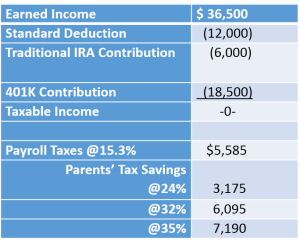 Does your home office qualify for a tax deduction?
Does your home office qualify for a tax deduction?
If you’re self-employed and work out of an office in your home and you satisfy certain strict rules, you will be entitled to favorable “home office” deductions. These deductions against your business income include the following:
- Direct expenses of the home office – for example, the costs of painting or repairing the home office, depreciation deductions for furniture and fixtures used in the home office, etc.; and
- Indirect expenses of maintaining the office – for example, the properly allocable share of utility costs, depreciation, insurance, etc., for your home, as well as an allocable share of mortgage interest and real estate taxes.
In addition, if this office is your “principal place of business” under the rules discussed below, the costs of traveling between it and other work locations in your business are deductible transportation expenses, rather than nondeductible commuting costs.
Tests to determine home office deductibility
You may deduct your home office expenses if you meet any of the three tests described below: (1) the principal place of business test, (2) the place for meeting patients, clients, or customers test, or (3) the separate structure test. You may also deduct the expenses of certain storage space if you qualify under the rules described further below.
- Principal place of business
You’re entitled to home office deductions if you use your home office, exclusively and on a regular basis, as your principal place of business. Your home office is your principal place of business if it satisfies either a “management or administrative activities” test, or a “relative importance” test. You satisfy the management or administrative activities test if you use your home office for administrative or management activities of your business, and if you meet certain other requirements. You meet the relative importance test if your home office is the most important place where you conduct your business, in comparison with all the other locations where you conduct that business.
- Home office used for meeting patients, clients, or customers
You’re entitled to home office deductions if you use this office, exclusively and on a regular basis, to meet or deal with patients, clients, or customers. The patients, clients or customers must be physically present in the office.
- Separate structures
You’re entitled to deductions for a home office, used exclusively and on a regular basis for business, if it is located in a separate unattached structure on the same property as your home – for instance, an unattached garage, artist’s studio, workshop, or office building.
Space for storing inventory or product samples
If you’re in the business of selling products at retail or wholesale, and if your home is your sole fixed business location, you can deduct home expenses allocable to space that you use regularly (but not necessarily exclusively) to store inventory or product samples.
How much can you deduct?
The amount of your home office deduction is based on the amount of square footage allocated to your office space. There are two methods to choose from; Simplified Method and Regular Method.
Simplified Method
The simplified method for determining this deduction is straightforward: You receive a deduction of $5 per square foot, up to 300 square feet (the deduction can’t exceed $1,500).
Regular Method
You determine the deduction by figuring out the percentage of your home used for business. Then apply the resulting percentage to the total direct & indirect expenses discussed above.
To demonstrate, if your home is 2,000 square feet and your home office is 500 square feet, you use 25% of your home for business. You’re allowed to deduct 25% of the above-mentioned expenses against your income. The remaining 75% of qualified expenses carry over to Schedule A, if you itemize. These costs include property taxes and mortgage interest.
Someone with a larger office and higher expenses might benefit from the regular method of determining the home office deduction compared to the standard method.
We’ve got your back
At KRS, our CPAs can help you utilize the home office deduction to maximize potential tax savings. Give us a call at 201.655.7411 or email me at sfaust@krscpas.com.

 Does your home office qualify for a tax deduction?
Does your home office qualify for a tax deduction? Deducting expenses for medical and dental care is easier when you know the rules
Deducting expenses for medical and dental care is easier when you know the rules on payroll.
on payroll. If the entity is an LLC instead of an S-Corp, and your child is under 18, add back the payroll taxes of $5,585 to get your tax saving potential.
If the entity is an LLC instead of an S-Corp, and your child is under 18, add back the payroll taxes of $5,585 to get your tax saving potential.
